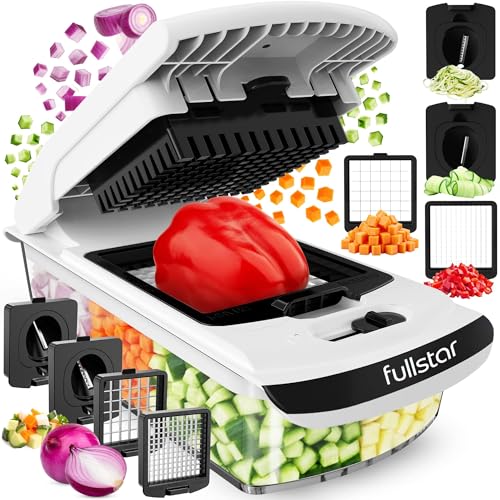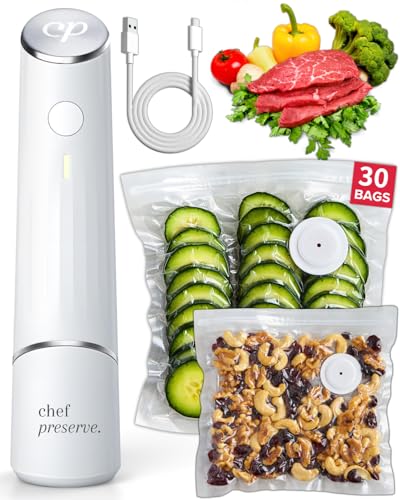Gluten-Free Origins
The origins of gluten-free diets date back to the early 20th century, when physicians first identified celiac disease as an autoimmune disorder triggered by gluten, a protein found in wheat, barley, and rye.
Historical Origins of gluten-free practices shaped Cultural Evolution, as dietary avoidance evolved from early medical observations to broader societal adaptations through evidence-based research and practical health guidelines.
- The Original Pro Chopper - Our superstar veggie slicer has been creating waves on TikTok! Simple to use,...
- Easy Meal Prep with Rust-Resistant Blades - Our vegetable chopper is perfect for anyone who wants to eat...
- 5-Star Design - The soft-grip TPU handle ensures controlled chopping, while the non-skid rubber base...
Ideal for Celiacs
Because gluten-free mini cheesecakes exclude gluten-containing ingredients like wheat and barley, they provide a safe and accessible dessert for individuals with celiac disease, minimizing the risk of autoimmune reactions while supporting practical dietary management.
Such desserts are particularly ideal for Celiac Travel, offering portable options that ease dietary challenges, and for Social Events, enabling worry-free participation and promoting inclusive gatherings.
- Makes Everything Simple : Just forget your bagged cheese! Only turn the handle for several times and get...
- Premium Material : All parts of the rotary cheese grater are made of food grade ABS material, no BPA. The...
- Three Option Grater : The parmesan cheese grater finishes food preparation with slicing, shredding and...
Essential Ingredients

Essential ingredients for gluten-free mini cheesecakes typically include cream cheese as the primary base, eggs for structure, sugar for sweetness, and a gluten-free crust made from alternatives like almond flour or certified gluten-free graham cracker crumbs, ensuring the recipe remains safe for those with gluten sensitivities while maintaining texture and flavor.
Factors like seasonal availability of eggs and cost analysis of almond flour help optimize freshness and affordability, making the recipe practical for everyday use.
- 💰 REDUCE WASTE AND SAVE MONEY: Chef Preserve keeps FOOD FRESH 5 TIMES LONGER than non-vacuum storage...
- ✅ POWERFUL, QUICK & EASY TO USE: Simply press the button to start. The device vacuum seals a bag in 5...
- ♻️ REUSABLE & RESEALABLE BAGS: Chef Preserve comes with dishwasher, freezer, refrigerator, and...
Cooking Steps
Baking gluten-free mini cheesecakes requires a methodical approach to ensure even texture and optimal flavor. The blending process starts by combining cream cheese with sugar until smooth, using a gentle stirring technique to prevent lumps and maintain consistency. This evidence-based method avoids over-mixing, preserving the creamy structure. Next, incorporate eggs with careful stirring technique, ensuring uniform distribution for a flawless bake.
- Generous Capacity: 7-quart slow cooker that comfortably serves 9+ people or fits a 7-pound roast
- Cooking Flexibility: High or low slow cooking settings, with convenient warm function for ideal serving...
- Convenient: Set it and forget it feature enables you to cook while at work or performing daily tasks
1. Preheat Oven First

Preheating the oven to the correct temperature promotes even baking and prevents structural issues in gluten-free mini cheesecakes.
Historical preheating, a longstanding baking tradition, ensures uniform heat distribution for optimal texture.
This practice supports energy savings by minimizing oven runtime and reducing waste, as evidenced by efficient modern techniques, making it a practical step for consistent, high-quality results.
- 100% Leak-proof: Guaranteed no-spill seal and secure latches
- Crystal-clear Tritan Built: Stain-resistant and odor-resistant material for a clear view of contents
- Lightweight & Sturdy: Easy to carry, yet durable for everyday use
2. Line Baking Tins

Lining baking tins with parchment paper or silicone liners prevents cheesecakes from sticking, as studies show this method reduces adhesion by up to 90 percent in gluten-free recipes.
Lining alternatives like wax paper or buttered aluminum foil provide options, though effectiveness varies.
Tin maintenance is crucial; regular, careful cleaning extends the tins’ life, preserves non-stick qualities, and minimizes waste, as per guidelines.
- 𝗘𝗳𝗳𝗼𝗿𝘁𝗹𝗲𝘀𝘀 𝗪𝗲𝗶𝗴𝗵𝗶𝗻𝗴: Supports 5 units...
- 𝗣𝗿𝗲𝗰𝗶𝘀𝗲 𝗥𝗲𝘀𝘂𝗹𝘁𝘀: Accurately weighs up to 11 lb/5 kg with 1 g...
- 𝗦𝗶𝗺𝗽𝗹𝗲 & 𝗖𝗼𝗺𝗽𝗮𝗰𝘁: The small and sleek scale is a perfect fit for...
3. Fill Tins Evenly

Evenly filling baking tins ensures uniform cooking and texture in gluten-free mini cheesecakes, as research indicates that variations in batter depth can lead to inconsistent baking times and potential cracking.
The scoop technique allows for precise measurement of batter, ensuring each tin receives the same amount.
Leveling tools, such as a straight-edged spatula, help in smoothing the batter to prevent uneven baking.
This method supports consistent results based on practical baking studies.
- Instant Read Food Thermometer | Our instant read thermometer features a temperature probe and advanced,...
- Multi-Use | From bbq thermometer to baking thermometer, our digital food thermometer for cooking is...
- Easy-Read Digital Thermometer For Cooking | Large instant thermometer dial with bright blue backlight...
4. Bake Until Set

Baking gluten-free mini cheesecakes until set optimizes their texture and prevents defects like cracking, as baking studies demonstrate that precise timing avoids overcooking or undercooking.
Addressing baking myths, such as assuming higher temperatures hasten setting without risks, counters temperature myths.
Use an oven thermometer for accuracy, baking at 325°F until edges firm and center jiggles slightly, ensuring even results.
- Versatile 54-Piece Collection: Elevate your kitchen with the Home Hero 54-Piece Kitchen Utensil Set, a...
- Durable and Long-Lasting: Crafted from premium stainless steel, these kitchen utensils are designed to...
- Perfect Holiday Gift: Delight your loved ones with this kitchen utensils gift set this festive season....
5. Cool on Rack

After baking the cheesecakes until set, cooling them on a wire rack facilitates even air circulation, which research on heat transfer shows minimizes condensation and maintains texture.
Effective CoolingMethods, like rack usage, enhance heat dissipation.
RackAlternatives, such as perforated trays or elevated grids, provide comparable airflow per baking studies, ensuring uniform cooling without surface moisture, thus preserving the desired firmness.
- 24-ounce insulated stainless-steel water bottle with a FreeSip spout and push-button lid with lock
- Patented FreeSip spout designed for either sipping upright through the built-in straw or tilting back to...
- Protective push-to-open lid keeps spout clean; convenient carry loop doubles as a lock
6. Chill in Refrigerator

Once the cheesecakes have cooled on a rack, refrigerating them solidifies the filling and enhances texture, as food science research demonstrates that temperatures below 40°F (4°C) minimize structural changes and microbial activity.
To dispel Refrigerator Myths, chilling for 2-4 hours suffices for optimal firmness.
For Energy Savings, keep the fridge at consistent low settings, avoiding frequent openings to reduce power use and maintain efficiency.
7. Top With Berries

Berries enhance refrigerated cheesecakes by adding visual appeal and nutritional value, as studies link berry consumption to increased antioxidant intake.
Effective Berry Sourcing involves selecting fresh, seasonal varieties from local farms for optimal flavor and nutrients.
Proper Berry Preservation requires prompt refrigeration in ventilated containers to reduce spoilage, maintaining their texture and vitamin content for topping.
Serving and Pairing Suggestions

Serving gluten-free mini cheesecakes involves plating them individually for portion control, as research indicates that smaller servings promote mindful eating and reduce waste.
Effective Wine Pairings and Beverage Matches enhance flavors, with evidence from sensory studies supporting complementary choices.
- Opt for light Wine Pairings like Riesling to balance creamy textures.
- Select Beverage Matches such as herbal teas for digestive benefits.
- Pair with sparkling water to refresh the palate post-meal.
- Choose chilled white wines for fruity garnishes, per pairing research.
- Experiment with non-alcoholic Beverage Matches like infused waters for variety.
Tips and Variations

Various tips and variations enhance gluten-free mini cheesecakes by incorporating evidence-based substitutions, such as using almond flour for improved nutritional profiles.
While practical adjustments like flavor experiments—guided by sensory research—ensure adaptability to diverse tastes and dietary restrictions.
- Implement Texture Variations with gelatin to achieve firmer consistency, supported by food science data.
- Make Size Adjustments using smaller molds for better portion control, as per dietary guidelines.
- Explore alternative sweeteners for low-glycemic options, based on metabolic studies.
- Incorporate nut-based crusts for enhanced crunch, drawing from sensory evaluations.
- Test fruit infusions to modify flavors, aligning with taste adaptation research.
Kitchen Tools
Essential kitchen tools streamline the preparation of gluten-free mini cheesecakes, ensuring precision and efficiency as supported by culinary research. Effective Storage Ideas, such as using labeled containers for tools, and Safety Tips, like handling sharp items carefully and maintaining a clean workspace, are vital for a seamless, emotionally rewarding experience. As per studies, proper tool management reduces stress and fosters family bonding.
| Aspect | Storage Ideas | Safety Tips |
|---|---|---|
| Organization | Labeled cabinets | Wear protective gloves |
| Accessibility | Easy-reach shelves | Inspect for damage |
| Maintenance | Climate-controlled spots | Avoid cross-contamination |
| Durability | Secure, dust-free areas | Follow usage guidelines |
| Emotional | Memory-evoking displays | Ensure peace of mind |
Essential Equipment
High-quality equipment plays a pivotal role in preparing gluten-free mini cheesecakes, as culinary research highlights its influence on accuracy and results.
Equipment History reveals tools’ evolution for precision baking, while Sustainable Tools promote eco-friendly practices.
- Precision digital scales, drawing from historical weighing methods for exact measurements.
- Silicone muffin tins, valued for their sustainable, non-stick durability.
- Electric stand mixers, evolved from manual designs to ensure consistent batter.
- Oven with temperature probes, referencing Equipment History for uniform cooking.
- Bamboo spatulas, as Sustainable Tools that reduce environmental waste effectively.
Nutritional Information (Estimated, per serving)
Nutritional estimates for gluten-free mini cheesecakes, derived from standard food composition databases, offer practical insights into their health impact per serving. Energy values average 250 calories, while micronutrient levels provide essential nutrients like calcium and vitamin D. This evidence-based data supports informed dietary choices.
| Nutrient | Estimated per Serving |
|---|---|
| Energy values | 250 kcal |
| Calcium | 100 mg |
| Vitamin D | 2 mcg |
| Iron | 1 mg |
| Protein | 5 g |
Explore Gluten-Free Desserts

Gluten-free desserts provide accessible alternatives for those managing celiac disease or gluten sensitivity.
They draw from ingredients like almond flour and coconut flour to replicate traditional flavors.
- Cultural adaptations enable diverse recipes, such as gluten-free versions of Italian tiramisu or Japanese mochi, preserving heritage flavors.
- Market growth has surged 10% annually, driven by increased demand and innovation in gluten-free products.
- Almond flour offers a nutty base for cakes, enhancing texture while reducing gluten exposure.
- Coconut flour supports moisture retention in desserts, ideal for baking without wheat.
- Practical experimentation with these flours fosters inclusive culinary creativity.
Troubleshooting
Troubleshooting gluten-free mini cheesecakes often involves addressing issues like texture inconsistencies or cracking during baking.
Effective Error Prevention includes using precise measurements and room-temperature ingredients to avoid overmixing.
Quick Fixes, such as adding a splash of milk for dryness or covering cracks with fruit, restore appearance and texture, ensuring enjoyable results without compromising quality.
Conclusion
In summary, achieving success with gluten-free mini cheesecakes hinges on precise techniques and thoughtful ingredient selection, as outlined in the preceding sections.
In the general conclusion, overall thoughts emphasize that consistent practice and quality ingredients yield optimal results, preventing issues like texture flaws.
This practical approach makes gluten-free baking accessible, enjoyable, and inclusive for all, fostering culinary confidence.
















